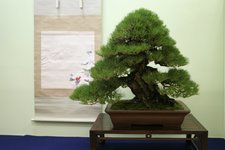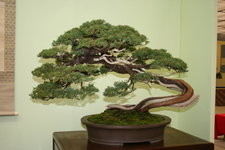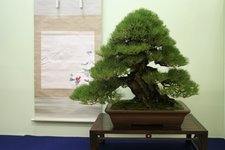There is a style or type that appeals to everyone, and the more we look, the more we like. To each their own. The question of whether one form or another is or is not "good" bonsai because it is harder to achieve, or made to an ancient standard, or is a species favored by the old Japanese, is the real bone of contention. The world evolves in all aspects, maybe especially in artistic form and tastes. As much as the old masters (in European arts) are admired, modern artists don't spend much time trying to duplicate their works. And therein lies the rub. I have never heard of critiquing today's painters' works by comparing them side-by-side to the Mona Lisa, ad infinitum. While we study the old masters to acquire an understanding of how and why they achieve impact upon viewers, we don't limit ourselves to just reproducing copies of "traditional" art. Neither should bonsaiists.
The question of whether a tree in a pot that looks like a tree in nature is more worthy or less worthy than a highly stylized tree in a pot can't be answered in the absence of their presence, and especially in an abstract discussion. Artistic value and impact are like pornography, "I know it when I see it".
 l.facebook.com
l.facebook.com








